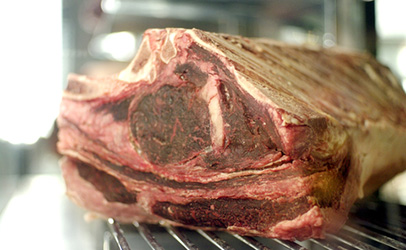A European Commission audit of Polish meat controls after an abattoir was filmed slaughtering sick cows has found the system was “ineffective” as a deterrent.
The audit in Poland from Feb. 4 to 8, 2019 took place in the context of a “crisis situation”, according to DG Sante, the unit responsible for the EC’s policies on health and food safety.
It covered visits to the slaughterhouse allegedly implicated and responsible district veterinary office, another slaughterhouse and one supplying dealer, and an independent cutting plant involved in the recall.
Polish broadcaster TVN’s covert footage showed animal welfare non-compliances at slaughter and during transport of animals. Images were taken – probably during November 2018 – in one bovine slaughterhouse with cutting activities and pointed to lack or inadequacy of veterinary controls. The broadcast included images recorded on Jan. 14, 2019. Footage showed cows unable to stand (downer cows) or injured.
Rapid Alert System for Food and Feed (RASFF) updates linked meat to deliveries in 15 member states including Poland. With veterinary controls not carried out as required, the bovine meat was presumably unfit for consumption.
During a meeting of the Biological Safety of the Food Chain section of the Standing Committee on Plants, Animals, Food and Feed in February two member states said meat from the Polish slaughterhouse was consumed before authorities were informed of a possible risk.
The fallout of this incident led to the Czech Republic imposing extraordinary veterinary measures on beef from Poland following the detection of Salmonella. The move meant that Polish beef must be tested in an accredited lab at a cost to the importer before it could be placed on the market.
The European Commission judged this action, put in place in February, to be disproportionate. The Czech Republic lifted the measures at the end of March. Slovakia also increased surveillance for beef from Poland.
The audit found serious shortcomings in the implementation of official controls at the implicated slaughterhouse and supervision at the district level did not recognize signs which might point to such issues.
In 2014, a control in the slaughterhouse identified district supervision was not satisfactory. A follow-up inspection in 2015 verified deficiencies was corrected.
The audit team found nothing to suggest authorities took into consideration available information concerning dealers actively looking for downer cows or injured cattle, or the fact that there had been similar events in the past.
The slaughterhouse/cutting plant has a monthly throughput of 300 animals. Bovine slaughter typically took place from 6 pm onwards with an average line speed of five cows per hour.
Post- mortem inspection records were not kept from Jan. 10 to 14, 2019, despite 36 cows being slaughtered. Authorities told the audit team that two approved veterinarians in the slaughterhouse were relieved of their duties on Jan. 17 for this reason.
Ante-mortem records include two cows delivered on Jan. 14 belonging to the dealer, declared fit for slaughter with no remarks, whereas video footage allegedly taken in the slaughterhouse suggests one of the cows was too weak to stand up with a severely swollen knee.
“In the particular context of cull cow slaughter it would, in the experience of the audit team, appear very unusual not to have any incidents and/or other condemnations recorded for the periods of time documented, and could be an indication of inadequate ante- and post-mortem inspection by the approved veterinarians,” according to the report.
District authorities told the audit team that staff involved in food safety official controls dropped in 2017 by 109 to 500 while the number of official veterinarians fell by 114, to 358. Feedback from authority representatives suggested staffing and resources are a limiting factor in the organization and implementation of controls.
Other issues included persistently late or non-notification of cattle movements, absence of cross checks at different operational levels and lack of access of approved veterinarians to the database as well as ineffective enforcement of relevant provisions.
“Not only does this seriously undermine the correct application of these provisions by food business operators, it also means that the database cannot be effectively used as an otherwise important tool to monitor animal movements, and hence to inform competent authorities not only of the correct application of traceability provisions but also about possible targeting of official controls,” according to the report.
Polish authorities said the official controls system failed in the district responsible for the slaughterhouse involved and it did not minimize the risk of similar situations occurring elsewhere. They highlighted the system is underfunded, resulting in varying levels of performance in different areas of the country.
Authorities presented measures they intend and/or consider introducing including re-enforcement of official controls at different levels and introduction of legislative changes.
Other ideas such as introducing compulsory closed-circuit television (CCTV) recording at slaughterhouses are under consideration. The authority also stated it counts on ministerial support to improve staff levels and financial remunerations for officials.
An in-depth audit covering official controls on the slaughter of bovine animals and traceability in Poland was undertaken from March 25 to April 5, 2019.
(To sign up for a free subscription to Food Safety News, click here.)

